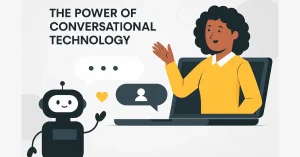If you’re waiting for the right time to invest in the development of the Fintech app, then don’t wait further. As the world is going through a critical time due to COVID-19 where the world and the trends are changing. People are now understanding that the future is now in the digital world and the demand for digital tools is increasing day by day.

Back in the old days when we have to wait hours and hours just to deposit a cheque. Life was so hectic and burdening. But now the world is going digital and mobile banking is introduced. There is a boom of mobile technology which is changing the old traditional trends and making life much easier. Now you don’t have to wait in a queue for your turn, you can do all of your banking tasks from your mobile phone. For ease of life, people are willing to pay for online convenience. According to a survey it is observed that the Global Fintech market might reach up to 305 Billion dollars by 2025.
It is observed that the technology being used in Mobile banking is changing drastically due to the demanding market value. Technologies are upgrading regularly to meet the demanding market trends and challenges.

A few years before, the bank was considered a well-established is they can manage to afford a good building, but now the trends are changed. Now the bank is considered well-established and can only survive in the market if they have good online services. To survive in the demanding market, the banks must have fully functioning websites and mobile applications. If the bank’s website and application are working 24/7 without any delay, then it can play a huge part in overall banking income.
8 Steps to Build a Fintech Application
Step 1: Do thorough research
Fintech software developers have to do a lot of research before making this innovative app. They have to research new trends, new demands and expectations of their customers, what different they are going to offer in this app. A proper map should be prepared to outline and highlights the overall strategic plans, and All the features should be stated clearly before building an app. A proper plan is being made for the guide on fintech app development which will finalize the overall outlook of the application interface including the identification of the main features should also be clear.
Step 2: Form a Dynamic Team
Building a fintech mobile app is not a work of a single person, you need proper, professional team members. Teamwork is effective only when there is no communication gap when the main idea and goal is clearly stated, what would be the features of the fintech mobile app, what would be the basic working of it. And are they familiar with this kind of work (Fintech mobile app)? Following experts are needed in this regard:
- UI Designing
- Web developing
- Android Developing
- iOS Developing
- Software Testing
- DevOps Engineering
Step 3: Clearly Define MVP (Minimum Viable Product) scope
MVP (Minimum Viable Product) should be defined, what’s its scope in the market. Following measures can be taken for it:
- The product you are, asking for, you should be aware of its features, and everything about it. Proper market research is required in this.
- As the team plays an important role, the development team should be called for further discussion on the most necessary features of the app.
- To highlight the main features which are selected, prioritizing tool is recommended
Step 4: Select your technology stack
Technology stack? What it is? For building and designing an app different languages are used like; Java for android and Swift for iOS. But it will cost more as you have two different users and you can’t make two separate guides on fintech app development.
The other option is Progressive Web App (PWA). It’s better than the technology stack, but the drawback is that it doesn’t let you use some of your mobile in-built features. Like; biometry. So most people don’t recommend it.
But options are not finished yet. Cross-platform app development is another method to build the app for both iOS and Android users. This approach is way better and has the extra benefit, that it will help you save up to 60% of the total cost. So, the third approach is highly recommended.
Step 5: APIs for basic functionalities
Features like; budgeting, bill tracking etc. are the main features that must be included in the Fintech app. You can make use of these basic functionalities if you own a business that already provides these services.
The major function of APIs is to provide the end-user with smooth and fluent access across the website
In this regard, REST (Representational State Transfer) APIs is the best option among others. It includes:
- Swagger should be used for recording the API
- Postman is the tool used for testing and development
- Database solutions like Mongo DB should be used for the development of API
- Data encryption and authentication should be acknowledged, as security is a major concern.
Step 6: Design UI/UX
In this part of developing the fintech mobile app, all the designing, colours, and artistic features are involved. It should be made sure that the features are not complex, nothing unnecessary is added on the dashboard, and instead, all the important features should be present over the dashboard. User-friendly functions should be adopted, and make it attractive for the customer. So designing is playing the main role in getting the attention of the user.
Step 7: Test launch
Before the main launch, the Beta version is released in the market. So that the audience, their users could try it, it’s mainly happened to get the feedback of the customers and what should be improved more. After this process, you are ready to launch your app.
Step 8: Update your application What would happen if the app is not updated? You’ll miss the new features of the fintech mobile app, how useful the update could be for you. The update is necessary in this regard because the company has brought many or few changes in its features, making it a lot easier for you. Otherwise, you’ll be using the old version of this app.





